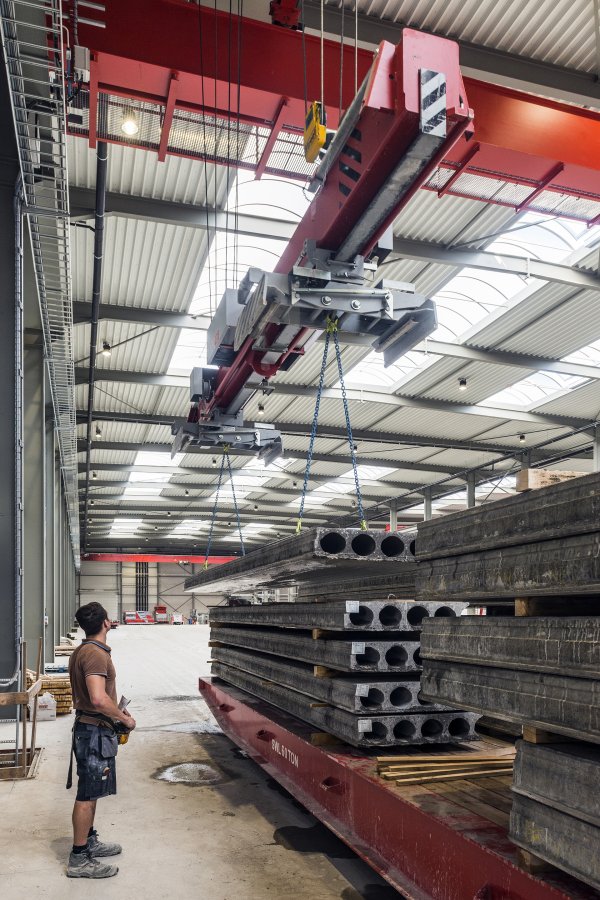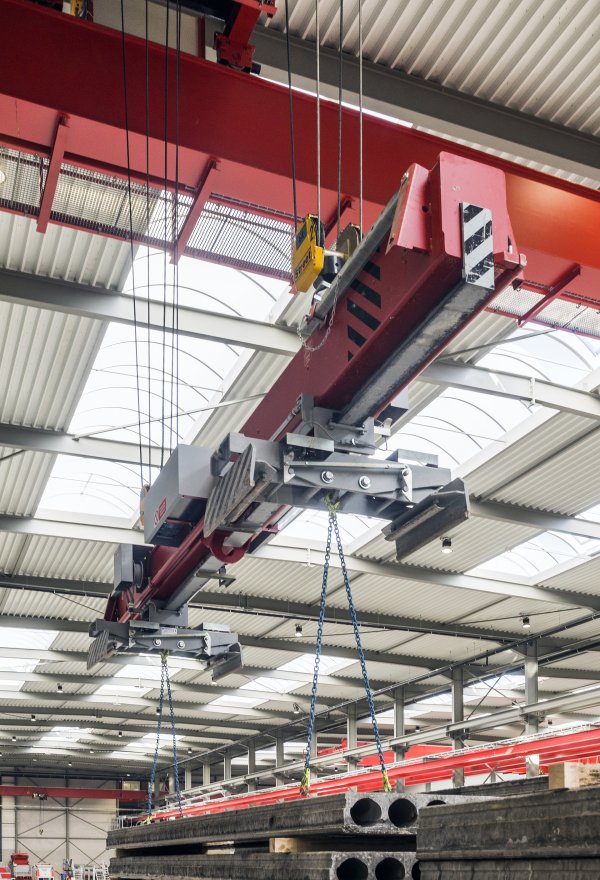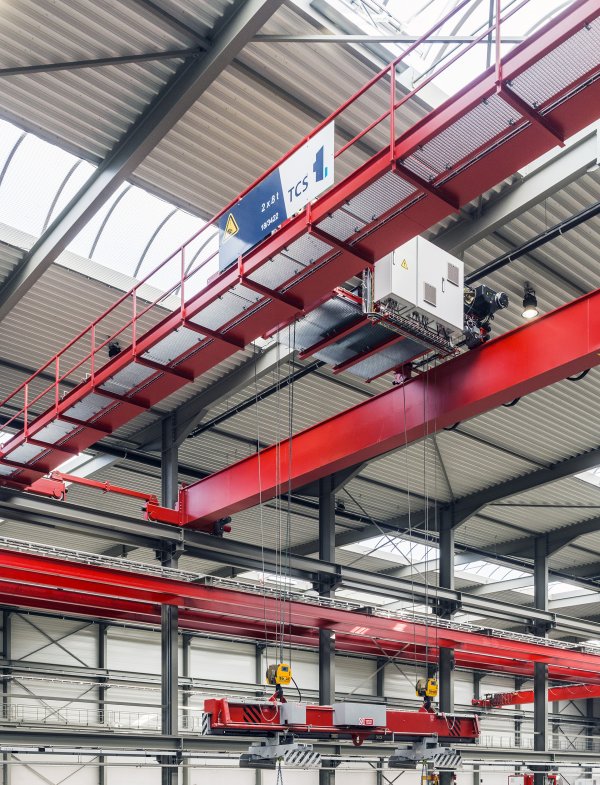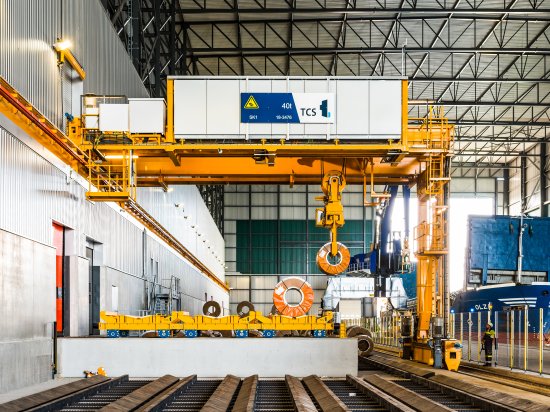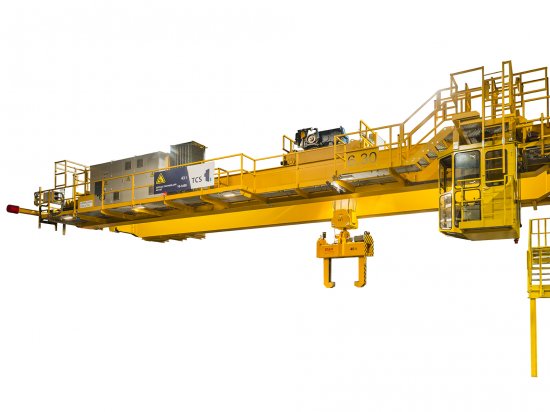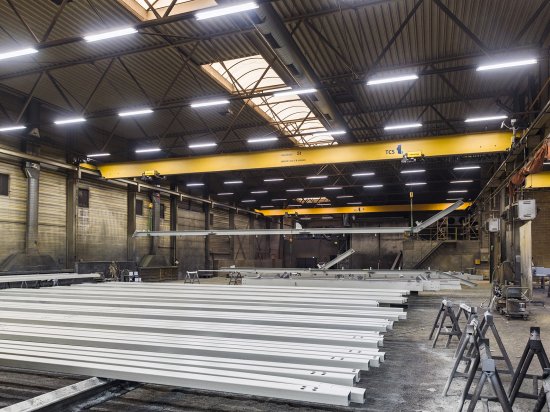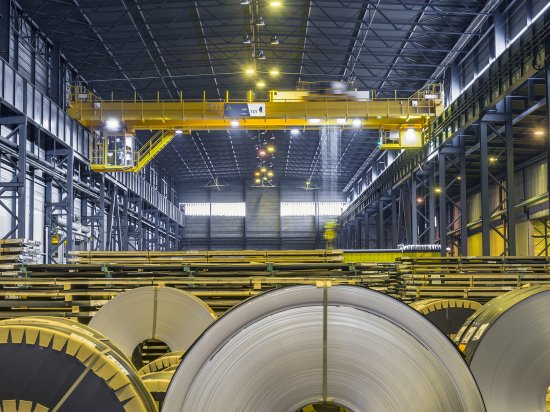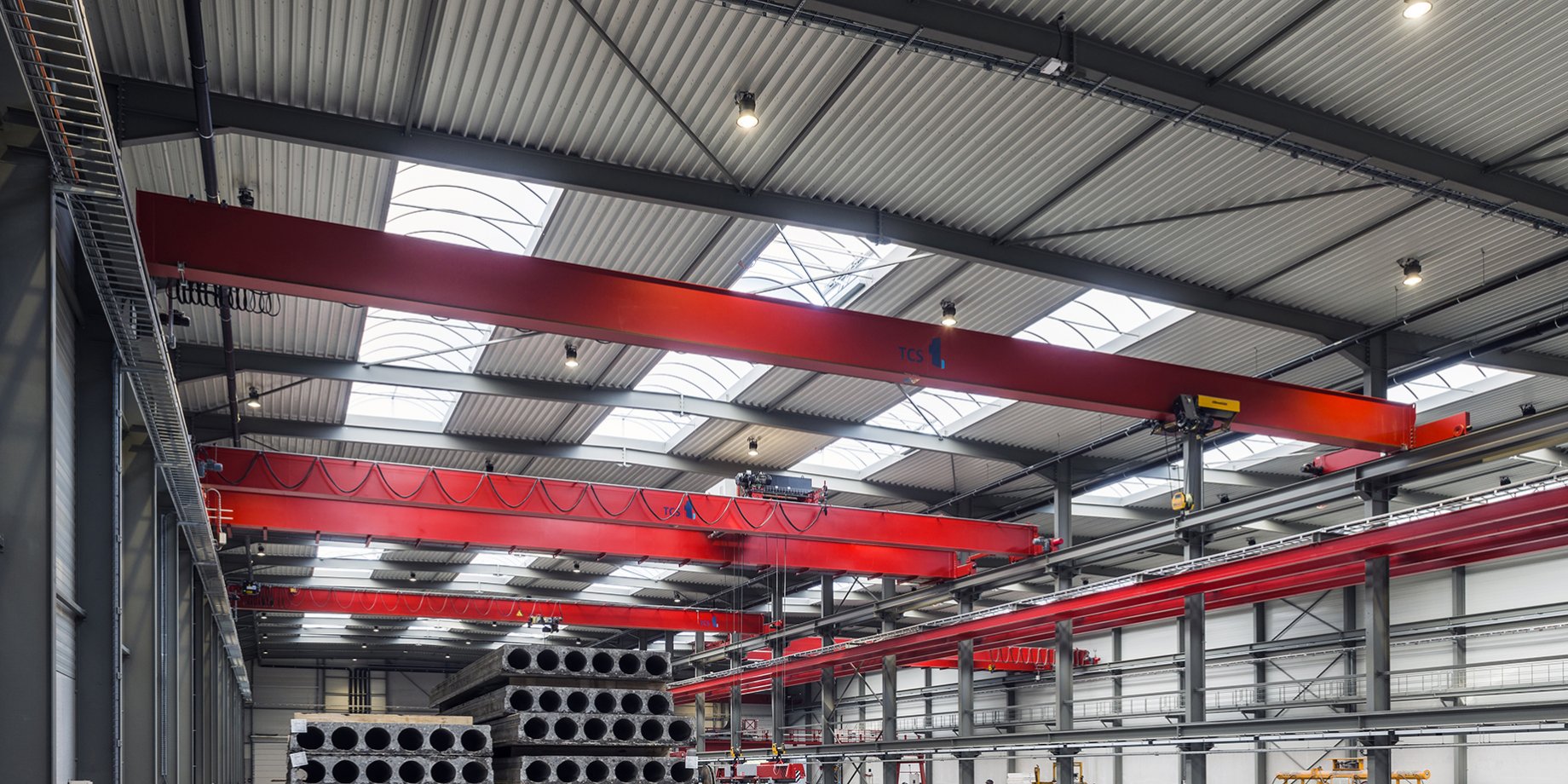
Shrewd decisions make for top performance
Founded in 1946 as a family business in the Kempen region east of Antwerp, Fingo has been a Belgian household name for its hollow-core concrete floor slabs since the 1970s. In recent years, they have been investing quite a lot in production capacity for prestressed slabs, a market that has been growing steadily over the past decade.
“Our prestressed slab plant in Malle reached full capacity not long after it was built in 2009,” says Production Director Maarten Kreemers. “And despite the crisis reigning at the time, we’ve been quite successful with these products, and in the Netherlands too.”
Spanning 20 m or more
The expectations are that demand for prestressed slabs will further increase in both residential and utility construction projects. That’s why Fingo decided to build extra capacity at Tessenderlo on a 900,000 m² site with a unit housing sixteen production lines. Slab heights range from 13 to 50 cm in 60 or 120 cm widths. “Our thickest slabs can span over 20 metres,” says Kreemers.
The unit came into operation in April 2019 and already runs two shifts a day, five days a week, the weekend being reserved for maintenance. Next year, a third shift during the night will be operational.
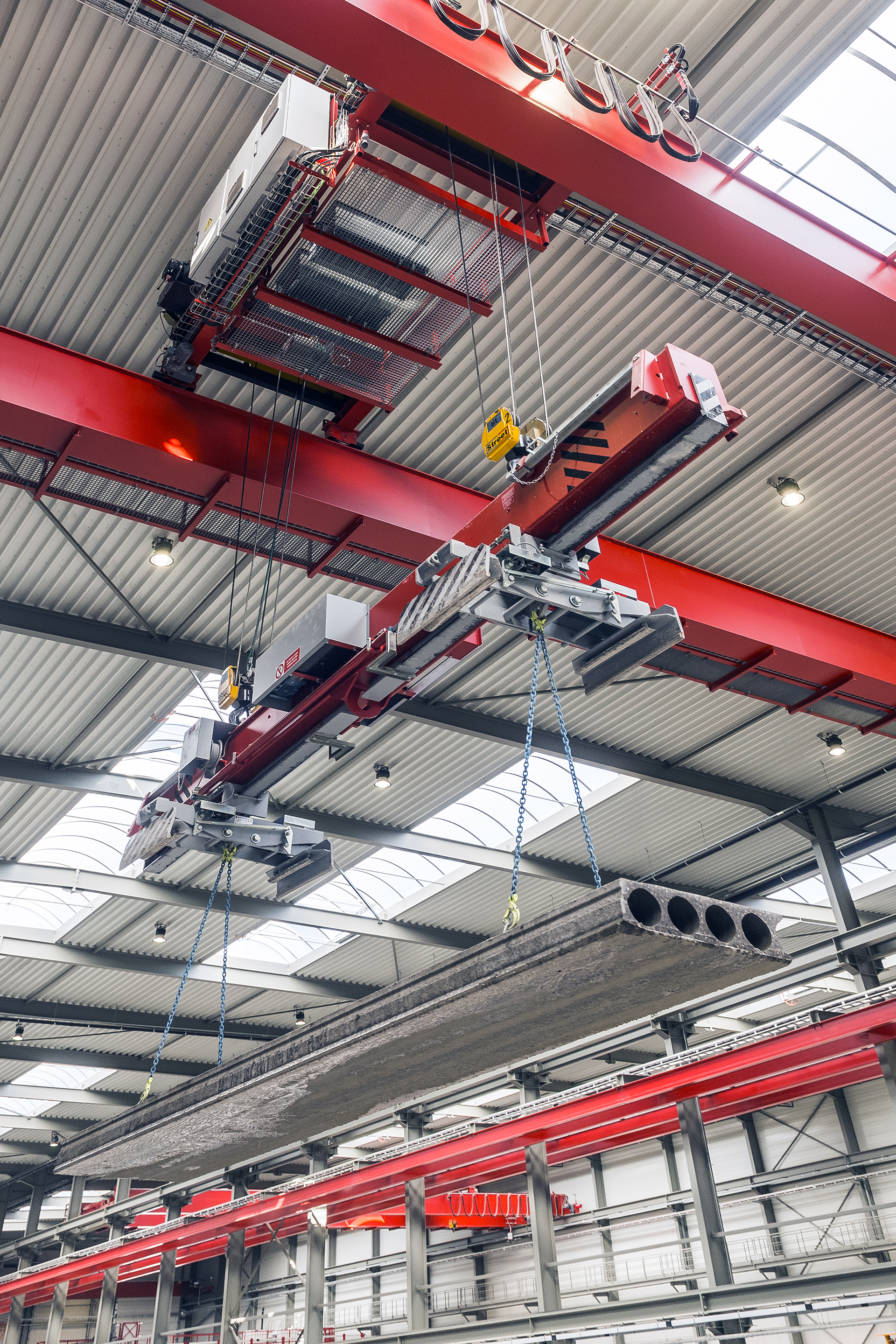
Optimizing beams for crane performance
The construction project itself went very smoothly, in part because of the dry summer in 2018 and moderate weather conditions the following winter.
“We’ve been lucky, it’s true, but it was also a matter of good planning and shrewd contracting,” says Kreemers. “I’ll give you an example. In a construction project like this, the general contractor would usually also build the rail beams for the overhead cranes. But at the Malle plant, we’d had trouble with the beams installed by the construction company. So, we decided to leave it all up to the crane designer and manufacturer instead. They know best how to optimize the beams for better crane performance and lower wear.”
The crane manufacturer knows best how to optimize the crane beams for better performance
Resolving a longstanding issue
The Tessenderlo project triggered resolution of another issue at the Malle plant. Maarten Kreemers explains: “During the project, we invited TCS to investigate a longstanding issue we had with a similar dual hoist crane at Malle. Their engineers quickly found that the problem was due to two things. Firstly, the crane beams had been inappropriately designed and aligned. Secondly, hoists of an insufficient duty class had been installed. So, we asked them to adjust the beams and to replace the hoists with appropriate equipment. As a matter of fact, they installed exactly the same hoists as here in Tessenderlo. Problem solved, thank you TCS!”
Specifications
- 400 m runways with power supply conductor rails
- Two DBK 2 x 8 t - 26 m dual girder overhead cranes equipped with:
- TCS intelligent motion control to optimize cycle times
- Joystick radio control
- Walkways along the crane and accessible trolley
- Four EBK 10 t - 26 m single girder overhead cranes with radio control
- One EBK 10 t - 15 m single girder overhead crane with radio control
- One EBK 3.2 t - 16 m single girder overhead crane with radio control.
